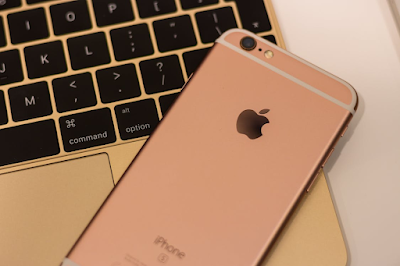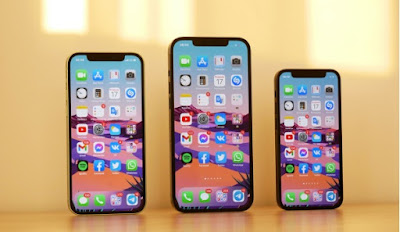Backing Up Data Before A Phone Repair
Imagine this scenario: your smartphone has encountered an issue that requires professional repair. It might be a cracked screen, a malfunctioning battery, or a software glitch. You've decided to trust experts for a fix, but what about all the important data, photos, and personal information stored on your device? The last thing you want is to lose it all during the repair process. That's where data backup comes in.
Backing up your data before a phone repair is crucial. It ensures that your valuable information is safe and can be easily restored once your device is back in your hands.
Why Backing Up Is Essential
Before diving into the "how," let's quickly discuss the "why." Here are some compelling reasons to prioritize data backup before a phone repair:
Preventing data loss: Accidents happen, and even the most skilled technicians can't guarantee your data's safety during a repair. Backup ensures you won't lose precious memories or important files.
Smooth transition: When your phone returns from repair, you want everything to be as it was. A backup allows you to restore your data quickly, minimizing downtime.
Security: Backing up your data means it's not only safe from accidental loss but also from potential data breaches during the repair process.
Now, let's get into the nitty-gritty of how to back up your data effectively.
Step 1: Identify Your Backup Method
There are several ways to back up your data, so choose the one that suits you best:
Cloud backup: Services like iCloud (for Apple devices) or Google Drive (for Android devices) offer seamless cloud backup options. Simply enable these services, and your data will be automatically backed up online.
Computer backup: You can connect your phone to a computer and use software like iTunes (for iPhones) or Samsung Smart Switch (for Samsung devices) to create a local backup.
Step 2: Backup Your Photos And Videos
Your phone is likely a treasure trove of photos and videos. Ensure they're safely backed up:
For iPhone users, iCloud Photos can automatically sync your media to the cloud. Ensure that it's activated within your settings.
Android users can use Google Photos for automatic cloud backup or connect their device to a computer and manually copy media files.
Step 3: Back Up Contacts And Calendars
Losing contact information and calendar events can be a real hassle. Here's how to safeguard them:
For iPhone users, iCloud also backs up contacts and calendars. Verify that Contacts and Calendars syncing is enabled in your iCloud settings.
Android users can sync contacts and calendars with their Google account. Go to Settings > Accounts > Google and ensure these options are turned on.
Step 4: Backup Apps And App Data
App-specific data can be essential, especially for apps like messaging or note-taking. To back them up:
For both iPhone and Android users, ensure that automatic app backup is enabled in your device settings. Most modern smartphones offer this feature.
Step 5: Verify Your Backup
Once you've completed the backup process, take a moment to verify that everything is securely stored. Check your cloud accounts or computer backups to ensure they contain all your data.
Step 6: Performing A Factory Reset
Performing a factory reset is a crucial step in ensuring the security of your data during the repair process. While it's not obligatory, it comes highly recommended. This process effectively erases all your data from the device, rendering it inaccessible to anyone who might come into contact with it during the repair.
Step 7: Ensuring Secure Packaging For Your Phone
Before sending your phone off for repair, it's essential to safeguard it from any potential damage during transit. Follow these steps to securely package your device:
1. Power off your phone.
2. Place it in a protective case if you have one.
3. Wrap your phone in a soft cloth to prevent scratches.
4. Find a sturdy shipping box or padded envelope.
5. Add extra padding, like bubble wrap or foam, to the box or envelope.
6. Place your phone inside and seal the package securely.
Step 8: Safeguarding Your Backup
While your phone is undergoing repairs, it's crucial to keep your backup safe and easily accessible. Here's what you should do:
1. If you've created physical backups on your computer, store them in a secure and dry location.
2. Ensure you have your login credentials for cloud-based backups readily available.
3. Consider using strong, unique passwords or a password manager for added security.
Step 9: Retrieving And Restoring Your Data After Repair
Once your phone has been repaired and returned to you, follow these steps to retrieve and restore your data:
1. Power on your phone and go through the initial setup process.
2. You'll likely encounter prompts to restore your data. Follow these instructions.
3. If you backed up your data to a cloud service, sign in to your account.
4. Select the appropriate backup to restore from.
5. Allow your phone to complete the restoration process, which may take some time.
6. Double-check that all your essential data, apps, and settings are back to normal.
Get The Best Phone Repair Deals At NWA Cell Phone Repair
Backing up your data before a phone repair is a simple yet crucial step to ensure your information's safety and a smooth transition when your device returns. Whether it's photos, contacts, or apps, taking these precautions can save you from potential headaches and heartaches.
If you ever require smartphone repair or cell phone repair near you, consider the experts at NWA Cell Phone Repair in Springdale. Their top-notch services cover a wide range of issues, from iPhone repair to Galaxy phone repairs, and their replaced parts also come with a 6-month warranty. Your data's safety is their priority. Let them help you get your device back in top shape. Get in touch with them here.







Comments
Post a Comment